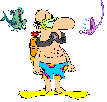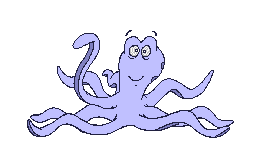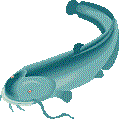


The ocean is a large body of water that covers more than 70% of the earths surface. You usually just call it the sea. The world is really one large ocean, broken by islands that we call
continents. The ocean is so large that you might sail for days without seeing land. The bottom of the ocean is so deep that in some areas the ocean bottom is more than 6 miles deep!

The ocean is constantly moving and changing. It is never still. It is always moving, just like some of you!

When you walk along Fire Island, and see the ocean, it is the Atlantic Ocean.
You'll sometimes find washed up on the shore: sea shells, starfish, fish, pebbles or even parts of things that may be unknown to you.

The ocean is filled with life! Plants grow along the shore. Many animals are found in the ocean. Some you can see and others you might need a microscope to view. Some animals float and others live under the sea.


The three great oceans of the world are:
1. the Pacific Ocean
This
is the largest and deepest ocean . It covers about 64,186,000 square
miles, more than 1/3 of the Earth's surface. That's an area large enough to hold
all of the continents in the world! The average depth of the Pacific is 15,215
feet. The deepest spot in all the oceans, "Challenger Deep," is 36,198 feet
(more than six miles) below the surface of the Pacific. At this depth in the
ocean, the water would cause the same amount of pressure as if there were
elephants pressing against every square inch of your body! Water pressure in the
ocean (the pressure caused by the weight of the water) increases 14.7 pounds per
square inch for every 33 feet of depth. North America and South America lie to
the east of the Pacific. Asia and Australia are to the west. To the north,
Bering Strait links the Pacific with the Arctic Ocean. The word "Pacific" means
"peaceful." But some of the most powerful storms on Earth blow out of the
Pacific. Thousands of volcanoes rise from the ocean floor, and earthquakes
happen often.
2. the Atlantic Ocean
This
the second largest body of water. Europe and Africa lie to the east; and
North America and South America are on the west. The Atlantic meets the Arctic
Ocean to the north. It covers about 33,420,000 square miles and has an average
depth of 12,881 feet. Major industrial nations are located on the coasts of the
Atlantic, making it the most important ocean for trade. Today, large ships are
still used to carry heavy machinery and bulky products like grain and oil.
3. the Indian Ocean
This
smaller than the Atlantic, covering 28,350,000 square miles and averaging 13,000
feet in depth. Africa borders it on the west, and Australia and the East Indies
are to the east. Asia lies to the north. Usually the winds that blow across the
Indian Ocean are very gentle, but as the winds change with the seasons, violent
storms called "typhoons" sometimes occur.
